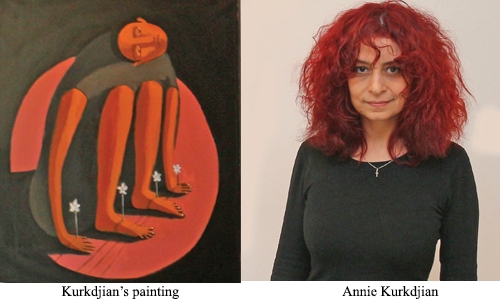Annie Kurkdjian: Artist spurred by Lebanese war
Albareh Art Gallery is hosting a solo exhibition of the latest works of award-winning Lebanese artist Annie Kurkdjian titled “Requiem.” The Beirut-based artist, whose childhood has been marked by the Lebanese civil war, said that creating artwork is like channelising her own emotions and feelings.
According to her, it makes her more productive, and as a result, she is happy. The theme in Kurkdjian’s paintings is not simply miserable towards direct horror, but also limited by an absence of both subject and object, fixing their gaze onto an empty space of missing significances.
“I was born in Beirut. From the age of two to 18, all I knew was the horrors and repulsions of the Lebanese civil war. It shaped me, and has given me the inspiration for the ideas, which I paint. My wartime experience has defined my art work,” she explained recalling the scourge of war.
Kurkdjian holds a degree in Fine Arts from the Lebanese University and degrees in psychology and theology from the Lebanese University and St. Joseph’s University respectively.
“When I first started pursuing art within an academic domain between 1994 and 2004, I never felt happy. Only when I decided to detach myself from the opinions and comments of others, I find my own impression and my happiness in art,” she said.
On her depiction of nudity in paintings, Kurkdjian said it could be deemed as a reflection of people’s most intimate and vulnerable moments. “When people are naked, they get rid of all the masks and inhibitions that they hide behind. They are only naked when they are alone.” Kurkdjian has been showcasing her works since 2005 with solo exhibitions at the Goethe Institute, Beirut. She is the recipient of the Johayna Baddoura Prize 2012, the “Mention special de jury” at the Sursock Salon, Beirut, 2011, and the first prize of figurative painting at Atelier “Z”, Paris, 2012.
Kurkdjian’s works can be found in collections at the University of Balamand, Beirut, and at the Musée de Tessé, Le Mans, France. The exhibition will continue until the end of February.
Related Posts

